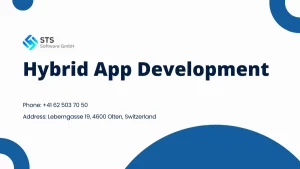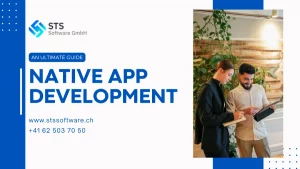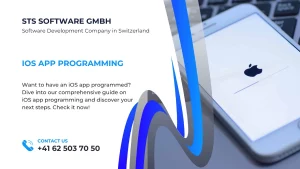Web frameworks play a pivotal role in shaping the functionality and efficiency of websites and web apps. The right frontend and backend frameworks can make or break a project. So, the key is to choose the best tools to stay ahead in the world of coding.
Today, this guide will keep you updated with the latest trends and innovations in frontend and backend web frameworks. Don’t miss out! Keep scrolling down to uncover the secrets of web development and bring your projects to the next level!
What are Web Frameworks?

A web framework, or a web application framework, is a software framework that supports the web development process. It offers a standard method to create and deploy the web app on the World Wide Web.
Web development involves many steps, and developers need web frameworks to automate some steps in the process. For example, a framework has a set of libraries, conventions, and tools. Developers can use templates and structures in the framework to build web apps more efficiently and quickly.
Web frameworks also offer other common features for web development, such as user session management, database management, and error handling. Developers can focus on the logic side of the apps because the frameworks are already in charge of the technical details.
There are backend and frontend web frameworks. While the frontend frameworks serve the client-side of your app, the backend ones focus on its underlying functionality. Different programming frameworks are based on the programming languages, such as Laravel for PHP and Django for Python.
Types of Web Frameworks
When building an app, you need to work with its inner and outer parts. Based on this idea, you have two primary types of web frameworks as follows:
Frontend Web Frameworks
Frontend web frameworks, or client-side frameworks, help with the app interface. These frameworks come with ready-made templates and codes. Developers use them to build interactive interfaces and appealing animations.
JavaScript is the most popular programming language because developers use it on both the backend and frontend. In terms of frontend, you can also use CSS and HTML. Each language requires different frameworks, such as:
- CSS: Bootstrap, Skeleton, Foundation, Tailwind CSS, etc.
- HTML: Onsen UI, Foundation, etc.
- JavaScript: Ember.js, React, Angular, Meteor, Vue.js, etc.
Backend Web Frameworks
Backend web frameworks, or server-side frameworks, work with the inner infrastructure of your app, which can be security, data management, and functionality. Although it’s invisible to users, it determines how well the app performs on the web server.
The most widely used programming languages for the backend include Java, Python, PHP, Node.js, Ruby, and C#. To work with them, you can use these frameworks:
- Java: Spring Boot, Hibernate, Struts, etc.
- Python: Django, CherryPy, Flask, etc.
- PHP: Laravel, Symfony, Zend, etc.
- Ruby: Ruby on Rails, Grape, Hanami, etc.
- C#: ASP.NET, NUnit, etc.
- Node.js: Express.js, Fastify, etc.
Why Choosing the Right Web Frameworks Matters?

Web frameworks can make your web development process hassle-free. If you are still unsure, consider the benefits they can bring.
- Efficiency: The frameworks provide integrable functions that assist you in working with complex programming languages. They can also automate tasks, helping developers save time and focus more on their business logic.
- Scalability: Reusable components in the frameworks allow you to scale your web applications quickly. You can add new elements or increase the system’s capacity when needed.
- Performance: Frameworks offer the best practices for web development. Hence, you can use them to build consistent and robust codes.
- Error avoidance: The error handling and security features in the frameworks help avoid errors and vulnerabilities.
- Community: Many developers contribute to web frameworks. So, when you access them, you can earn extensive guidance and support.
Most Popular Frontend Web Frameworks in 2024
The best frontend web frameworks help you build interactive and attractive interfaces for your web apps. Here are the most popular choices in 2024.
React.js
Key features:
- Virtual DOM
- Vast community
- Component-based architecture
- Developed and managed by Facebook
React.js is among the most popular frontend frameworks in 2023 because of its high usability. This high level of popularity has built a rich ecosystem, offering tons of third-party tools and libraries. If you are proficient in JavaScript, you can nail this framework.
Moreover, the architecture here is component-based, which means you can develop a maintainable and modular codebase. Virtual DOM is another plus, as it allows for efficient updates.
When to use: React is perfect for developing user interfaces in single-page and progressive web apps (PWAs).
When not to use: You may have a hard time working on React without experience in JavaScript.
Angular
Key features:
- Two-way data connection
- Run by Google
- Built-in services and templates
- Compatible with many technologies
Angular is an excellent frontend framework for developing, testing, and maintaining single-page apps. One of the best things about this framework is its two-way data binding option. So, if you make any change in your app, the modified elements will instantly show up on its view.
There are also many built-in templates and services to explore in Angular. You can even use it smoothly with other advanced technologies and server-side frameworks for web development.
When to use: Angular is ideal for browser-based apps because it supports content updates.
When not to use: Due to its complete solution package, Angular is unsuitable for small projects.
Vue.js
Key features:
- Simple syntax
- Small footprint
- Typescript support
- Easily reused in HTML
Vue.js can integrate into your existing projects. The small size and impressive rendering speed lead to exceptional performance and user experience.
One of the best things about Vue is its simple learning curve, especially for those with JavaScript backgrounds. You can receive typescript support and work with extensive documentation. You also value its versatility as it can adapt to many project sizes.
When to use: Vue is a good choice for building your web app from scratch thanks to its flexibility and simplicity.
When not to use: Vue won’t work nicely if your app requires stable components.
Svelte
Key features:
- Automatic updates
- Fast rendering time
- Small bundle size
- Lightweight and simple to use
Svelte is pretty new, so it has different technologies from other traditional front-end frameworks. For example, Svetle doesn’t use a virtual DOM but has efficient JavaScript code in its components. This way, it can render fast and offer small bundle sizes.
Another great thing about Svetle is its data-tracking feature. When you change data, it will be updated automatically in the system.
When to use: Svetle works best for small projects.
When not to use: Since this frontend development framework is new, you won’t receive as much support and many tools as other frameworks. Hence, avoid using it for big projects.
Ember.js
Key features:
- Rich features
- Built-on data spreadsheet
- Strong and fast
- Comprehensive CLI (Command Line Interface)
Ember.js is famous for its solid structures and conventions. Thus, you can easily use it to develop maintainable and scalable apps.
There are many features to expect. For example, Ember.js offers built-in tools that help you handle data management and routing. Hence, you can save effort and time when dealing with complicated apps.
When to use: The rich features make Ember.js an excellent choice for big projects that call for fast data binding and ready-made configuration.
When not to use: The cost of using Ember is relatively high. Moreover, it requires experience. So, Ember is not suited for small teams.
Backbone.js
Key features:
- Easy to use with other frameworks and libraries
- Event-driven method
- MVC pattern
- Lightweight and fast
Backbone.js uses the MVC (Model – View – Controller) pattern to separate, manage, and present data. This model can improve your app’s scalability and maintenance.
The smooth integration into other frameworks and libraries is another notable benefit of using Backbone. You can use it with Chaplin, Thoras, and marionette to possess its full potential.
When to use: Backbone is the best choice for projects that prioritize updates, synchronization, and maintenance.
When not to use: Backbone only handles simple requirements for web apps. If you want to improve functionalities, consider using extensions and plugins.
Most Popular Backend Web Frameworks in 2024
Now, we will discuss the best backend web frameworks for different programming languages in 2024.
Express.js (Node.js)
Key features:
- Support from vast middleware libraries
- Compatible with many HTTP methods
- Robust routing module
- Full-stack JS features
Express.js is a flexible and lightweight framework. Its robust routing module assists you in building powerful web applications. You can also take advantage of middleware support to create advanced features like authentication, compression, and logging.
Moreover, Express.js works well with many HTTP methods, including PUT, POST, and DELETE. Thus, you can build web apps and RESTful APIs effortlessly.
When to use: Express.js will help when you need a flexible framework to handle errors and integrate with third-party libraries easily.
When not to use: Middleware is a significant benefit of using Express.js. However, it demands a steep learning curve.
Django (Python)
Key features:
- Built-in security features
- ORM (Object Relational Mapping)
- URL routing
- Admin interface
If you code in Python, consider the Django framework for backend development. It has an ORM layer that simplifies database interactions, while the admin interface improves data management.
Moreover, this Python web framework provides a URL system, allowing you to map your URLs to designated controllers and views easily. If you struggle with SEO-friendly URLs, this Python-based framework can help, too.
When to use: Django web framework shines when you run rapid, scalable projects that need built-in security and precise documentation.
When not to use: Django may not be a good choice if you prefer a more lightweight framework.
Ruby on Rails (Ruby)
Key features:
- MVC architecture
- Good conventions
- Scaffolding
- Convention over Configuration
Ruby on Rails is an MVC-based framework that enables maintainable and structured code. It also offers scaffolding generators to automate basic functionalities.
Plus, this framework is popular for its sensible conventions and defaults. The CoC (Convention over Configuration) here eliminates the need for extra configuration while accelerating web development.
When to use: Ruby on Rails works best when your priorities are rapid development, security, and extensive libraries.
When not to use: This framework may lack flexibility for unique web development projects.
Laravel (PHP)
Key features:
- Easy routing
- Authentication
- Database migration
- Strong templates
- Elevated ORM
76.4% of websites use PHP. One of the most popular frameworks for this programming language is Laravel. The framework has many functionalities, such as caching, database management, routing, and authentication. The powerful ORM is another outstanding feature that helps streamline database operations.
Laravel also equips developers with an intuitive and lightweight template engine. They can then create reusable templates for their codes efficiently.
When to use: Choose Laravel for projects that require a built-in ORM and authentication system.
When not to use: Laravel is quite slow compared to some backend frameworks, but you can speed it up using extensive support.
Spring Boot (Java)
Key features:
- Auto-configuration
- Spring Boot Actuator
- Embedded servers
- Standalone
- No code generation needed
This Java-based backend framework has a high level of versatility. Moreover, it offers a set of solid conventions and pre-built templates that reduce the need for complicated manual setup.
Spring Boot also has an actuator for production-ready functionalities like app health checks and metrics. Do not forget to try embedded servers there to deploy your apps without setting up an external server.
When to use: Best for standalone projects.
When not to use: Spring Boot may limit your app’s flexibility in terms of web design.
ASP.NET (C#)
Key features:
- Exceptional routing
- Cross-platform development
- Dependency injection
- SignalR
- Razor pages
Created by Microsoft, this server-side framework provides a cross-platform solution. Hence, you can use it seamlessly on macOS, Linux, and Windows. There is also a built-in assistant for dependency injection to manage your app’s components and services.
SignalR is a unique feature in ASP.NET. It enables real-time interaction between clients and the server through transport mechanisms.
When to use: Ideal for lightweight apps with minimal modifications.
When not to use: The learning curve is steep. You should be proficient in .NET Framework, C#, and other programming paradigms to use ASP.NET.
Innovations Shaping the Future of Web Frameworks
Technology keeps growing, so there will be more trends to help you revolutionize web frameworks. For example:
- Serverless architecture: This technology allows you to develop and handle apps without managing their infrastructure.
- Microservices: A microservice can separate components of an app into small services that you can deploy independently.
- JAMstack: JAMstack is an excellent approach for frontend web development. It helps developers create and run static websites efficiently.
- Progressive Web Apps (PWAs): Developers use web platform technologies to build these apps. They offer an excellent user experience that makes it seem like you are using a platform-specific app.
Conclusion
By earning the power of frontend and backend web frameworks, you can have new possibilities and succeed in running your web development projects. There are numerous options, each with its own set of pros and cons. So, learn about them carefully to choose the best one for your website and web app.
Hopefully, this guide can keep you updated with the latest trends in the industry. Now, let your creativity flourish in this ever-changing digital landscape!



